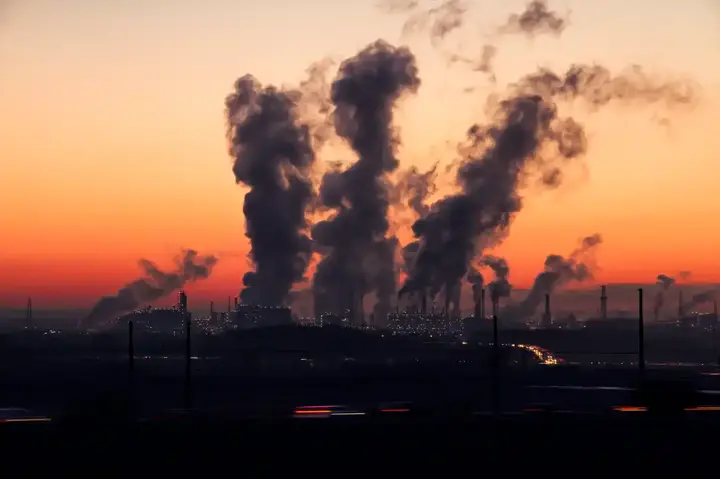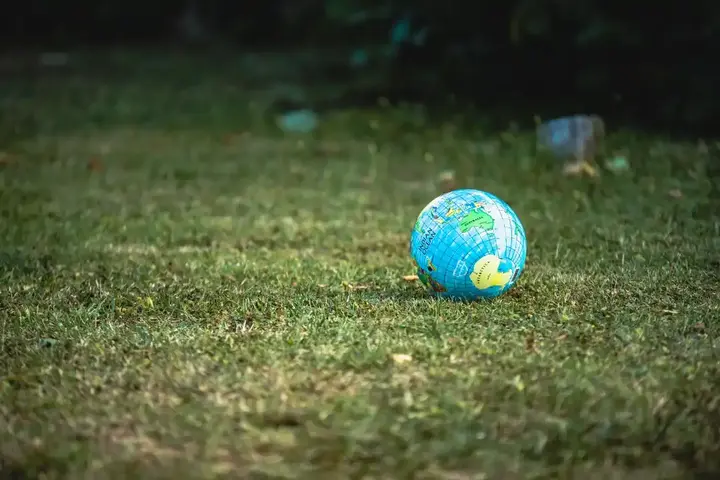Will the earth keep heating up?
The summer of 2023 was a season of extreme weather fluctuations. In June, uncontrolled bushfires swept through parts of Canada. In July, the world recorded the highest global temperature ever, held it for three consecutive days, and then dropped again on the fourth day. From July to August, extreme heat blanketed large parts of Europe, Asia and North America, while India faced a heavy monsoon season. A historic forest fire engulfed the Maui region, devastating an entire city. The summer of 2024 promises higher temperatures!
Show key points
- The summer of 2023 was marked by extreme and varied weather events worldwide, including record-breaking temperatures and devastating wildfires.
- Scientists attribute these increasing extreme weather patterns to human-induced climate change resulting from burning fossil fuels.
- The Paris Agreement set a global goal of limiting temperature increases to
- ADVERTISEMENT
- 5°C above pre-industrial levels to reduce the risks of climate impacts.
- Current global temperatures have already risen by approximately
- 15°C, and there's a significant chance we could temporarily exceed the
- 5°C threshold within a few years.
- Achieving the
- 5°C goal requires global net-zero carbon emissions by 2050, meaning balanced levels of carbon emitted and removed.
- Individual actions, such as reducing meat consumption and limiting the use of high-emission products and services, can contribute to emission reductions.
- Even with immediate emission cuts, existing heat stored in oceans will continue to raise global temperatures temporarily, making patience and persistence crucial.
These extreme weather events are essentially the result of climate change caused by humans continuing to burn coal, oil and natural gas. Climate scientists agree that extreme weather is likely to become more frequent and intense in the coming years unless something is done, on a continuous and planetary scale, to rein in global temperatures.
Recommend
What restraint are they talking about?

To prevent the worsening and potentially irreversible effects of climate change, there is an internationally agreed figure. The average temperature in the world should not exceed the average pre-industrial temperature by more than 1.5 degrees Celsius. As more regions around the world face extreme weather, it is useful to assess this 1.5-degree threshold, where our planet stands relative to this threshold, and what can be done on a global, regional, and personal level.
Why 1.5 ° C?

In 2015, in response to the growing need for climate impacts, almost every country in the world signed the Paris Agreement, a landmark international treaty under which 195 countries pledged to keep the Earth's temperature "well below 2°C above what it was before the Industrial Revolution, with the aim of limiting temperature rise to no more than 1.5°C above pre-industrial levels. There is nothing magic about the number 1.5, except that it is an ambitious agreed goal. Nothing says that if, for example, the temperature rises by 1.51 degrees Celsius, it will certainly be the end of the world. Similarly, if the temperature remains at an increase of 1.49 degrees, it does not mean that we will eliminate all the effects of climate change. It is known that the lower the target set for temperature increase, the lower the risk of climate impacts.
How close are we to 1.5°C?

In 2022, the average global temperature was about 1.15°C higher than pre-industrial levels. According to the World Meteorological Organization, La Niña has recently contributed to temporary cooling and mitigation of the effects of human-induced climate change. La Niña lasted for three years and ended in March 2023. In May, the World Meteorological Organization released a report predicting a high probability (66%) that the world would cross the 1.5°C threshold in the next four years. This violation is likely driven by human-induced climate change, along with warming El Niño – a cyclical climate phenomenon that temporarily warms ocean areas and pushes global temperatures up. The temperature is likely to fluctuate between 1.1°C and 1.8°C above pre-industrial levels. Although there is a high chance that the world will become hotter than the 1.5-degree limit as a result of El Niño, crossing the threshold will be temporary, and the Paris Agreement, which aims for the long term (its average over several decades, not one year), will not fail. But even if we can control the average at the global level, we will see extreme events, due to climate change.
More than just a number:

To keep the planet's long-term average temperature below the 1.5-degree threshold, the world will have to reach net zero carbon dioxide emissions by 2050, according to the Intergovernmental Panel on Climate Change. This means that, in terms of emissions from burning coal, oil, and natural gas, the whole world will have to remove as much carbon as it releases into the atmosphere. On an individual level, there are things that can be done to help reduce personal emissions, and potentially limit rising global temperatures. We are consumers of products that either embody greenhouse gases, such as meat, clothing, computers and homes, or are directly responsible for greenhouse gas emissions, such as when we use cars, airplanes, electricity and air conditioners. Our daily choices therefore affect the amount of emissions added to the atmosphere. But to get people to action, we need to reach them not only by convincing them to be good citizens, and by saying it's good for the world to stay below 1.5 degrees, but also by showing how they will be affected on an individual level, focusing on how climate change affects the water cycle and the frequency of extreme weather such as heat waves. But real climate progress requires a radical change in how we access energy. This is a monumental, but not impossible, task. Are you personally willing to make sacrifices and change your lifestyle?

Even if all human greenhouse gas emissions cease today, the Earth's temperature will continue to rise for a few decades, as ocean currents bring excess heat stored in the deep ocean to the surface. Once this excess heat is radiated into space, Earth's temperature will stabilize. It takes work and patience, but it's worth it.
![]()
How to outperform everyone by acting like a CEO
Success isn't accidental—it’s built through CEO-like habits. Think strategically, decide with confidence, build strong networks, and manage time smartly. These executive behaviors shape a mindset that helps you grow, lead, and stand out in your career. Start adopting them now to pave your path to excellence. more- ADVERTISEMENT
![]()
How the nearby supernova left its mark on life on Earth
SN 1181, a mysterious "guest star" seen in 1181, has finally been linked to a rare supernova type called IAX. It left behind a "zombie" white dwarf, puzzling astronomers for centuries. New computer models now align with telescope data, offering fresh insight into this unusual celestial explosion. more- ADVERTISEMENT
![]()
Time poverty: modern distress and how to escape from its grip
Despite all our modern tech advantages, many feel trapped in a cycle of busyness, constantly short on time. This sense of “time poverty” drains well-being and productivity. The key to breaking free? Align with what truly matters, simplify life, practice mindfulness, and build healthier ways to cope with stress. more- ADVERTISEMENT
![]()
Who are these environmental activists, and are they ecologists?
Environmental activism inspires people to act for the planet, from simple clean-ups to influencing policies. But mixing activism with science too carelessly risks undermining trust. To truly protect our world, both activists and scientists must respect their roles without blurring the lines. more- ADVERTISEMENT
![]()
How did Boeing lose so badly to SpaceX?
Boeing, once the dominant force in spaceflight, is struggling to keep up with SpaceX, which has already launched 11 crews to the ISS. Despite delays and setbacks, Boeing hopes its Starliner capsule can still compete, though its future depends heavily on finding a new launch vehicle. more- ADVERTISEMENT
![]()
The Star Marvel: Discovering the Extraordinary in the Milky Way
The star marvel of the Milky Way dazzles with its vivid colors, sparkling structures, and deep mysteries. It's a celestial masterpiece that has inspired scientists and artists alike, blending beauty, culture, and cosmic curiosity into one extraordinary galaxy. more- ADVERTISEMENT
![]()
Simple ways to ascertain the nature of the curved ground
You don't need fancy tools or deep science to see Earth's curve—just use your camera, observe buildings, watch ships at sea, enjoy a flight, explore space photos, witness an eclipse, or study ocean tides. These simple experiences reveal the beautiful, curved nature of our planet in creative and exciting ways. more- ADVERTISEMENT
![]()
75% of the global diet is produced by just 12 plants and 5 different animals
Our diets rely on just a few crops, making them fragile and less nutritious. Embracing lesser-known, diverse foods like millet and winged beans can boost health, support farmers, and protect against climate and crop threats. more- ADVERTISEMENT
![]()
Best Graphic YouTube Design Learning Channels in Arabic
Noor Design Channel stands out by teaching design basics like color theory in a hands-on way, helping many Arabs become skilled designers. It also guides learners on turning design skills into freelance work, making it a top pick for Arabic-speaking beginners. more- ADVERTISEMENT
![]()
The importance of social communication for public health
The importance of social communication for public health more- ADVERTISEMENT





















